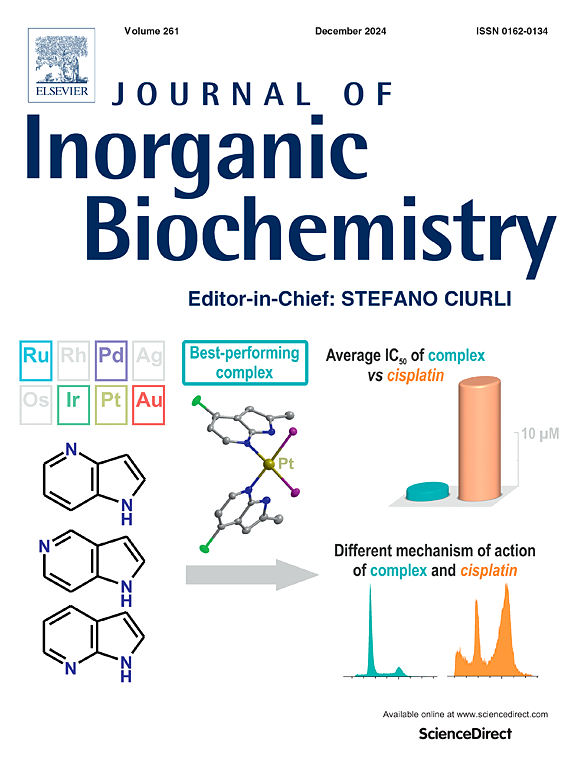新型三唑嘧啶基二茂铁的合成、表征及微生物学评价
IF 3.8
2区 化学
Q2 BIOCHEMISTRY & MOLECULAR BIOLOGY
引用次数: 0
摘要
抗菌金属药物因其强大的抑制活性和临床成功而受到广泛关注,推动了新型金属候选药物的开发。这些努力已经发现了新的生物活性支架和作用机制。然而,微生物的遗传适应性和对几乎所有抗生素类别的耐药性加剧了抗菌素耐药性(AMR)的全球挑战,这突显了对创新抗生素的迫切需要。在这项研究中,我们通过设计、合成和生物学评价基于三唑嘧啶的二茂铁作为抗菌药物,扩大了金属药物的范围。这些化合物对细菌和真菌病原体具有广谱活性。先进的表征技术,包括核磁共振、HRMS、FE-SEM和SCXRD,证实了它们的结构完整性和性能。值得注意的是,二茂铁对念珠菌的抗真菌活性与氟康唑相当,对大肠杆菌和金黄色葡萄球菌也有效。我们的发现揭示了一类具有显著抗菌潜力的新型金属药物,为未来对抗AMR提供了有希望的途径。本文章由计算机程序翻译,如有差异,请以英文原文为准。

Synthesis, characterization, and microbiological evaluation of new triazolopyrimidine-based ferrocenes as potent antimicrobial prospects
Antimicrobial metallodrugs have gained considerable attention for their potent inhibitory activity and clinical success, driving the development of novel metallodrug candidates. These efforts have uncovered new bioactive scaffolds and mechanisms of action. However, the global challenge of antimicrobial resistance (AMR), fueled by the genetic adaptability of microbes and resistance to nearly all antibiotic classes, highlights the urgent need for innovative antibiotics. In this study, we expand the repertoire of metallodrugs by designing, synthesizing, and biologically evaluating triazolopyrimidine-based ferrocenes as antimicrobial agents. These compounds demonstrated broad-spectrum activity against both bacterial and fungal pathogens. Advanced characterization techniques, including NMR, HRMS, FE-SEM, and SCXRD, confirmed their structural integrity and properties. Notably, the ferrocenes exhibited potent antifungal activity against Candida species, comparable to fluconazole, and were effective against Escherichia coli and Staphylococcus aureus. Our findings reveal a new class of metallodrugs with significant antimicrobial potential, offering promising avenues to combat AMR in future.
求助全文
通过发布文献求助,成功后即可免费获取论文全文。
去求助
来源期刊

Journal of Inorganic Biochemistry
生物-生化与分子生物学
CiteScore
7.00
自引率
10.30%
发文量
336
审稿时长
41 days
期刊介绍:
The Journal of Inorganic Biochemistry is an established international forum for research in all aspects of Biological Inorganic Chemistry. Original papers of a high scientific level are published in the form of Articles (full length papers), Short Communications, Focused Reviews and Bioinorganic Methods. Topics include: the chemistry, structure and function of metalloenzymes; the interaction of inorganic ions and molecules with proteins and nucleic acids; the synthesis and properties of coordination complexes of biological interest including both structural and functional model systems; the function of metal- containing systems in the regulation of gene expression; the role of metals in medicine; the application of spectroscopic methods to determine the structure of metallobiomolecules; the preparation and characterization of metal-based biomaterials; and related systems. The emphasis of the Journal is on the structure and mechanism of action of metallobiomolecules.
 求助内容:
求助内容: 应助结果提醒方式:
应助结果提醒方式:


